Mastering O2O Retail Strategy: The Winning Formula for Online-Offline Integration
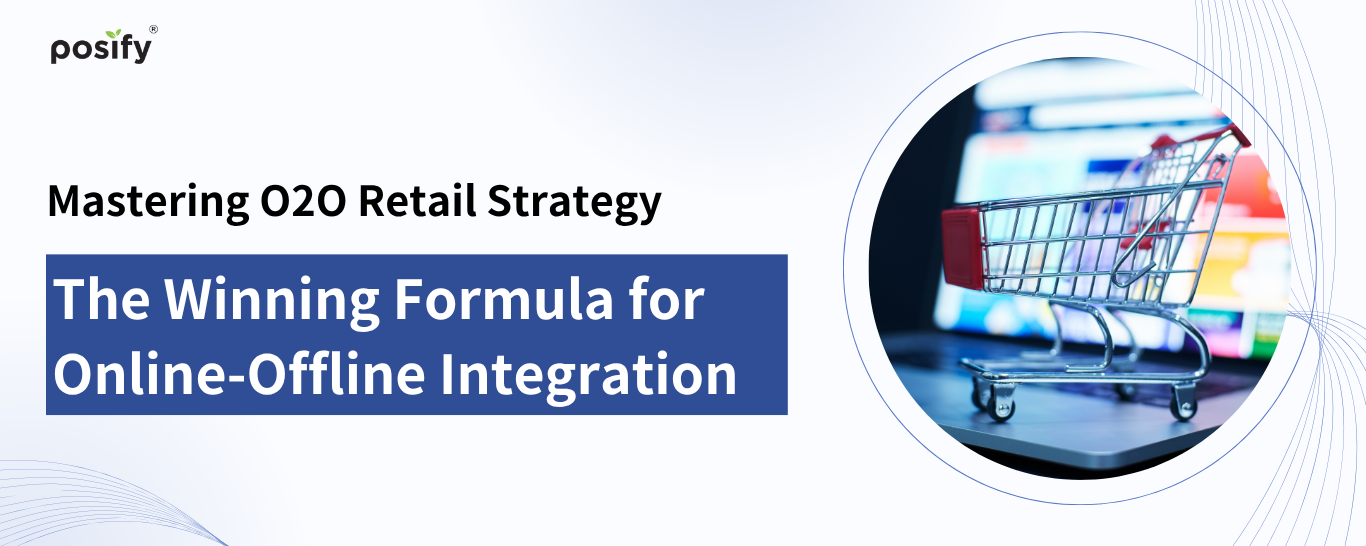
What is O2O?
O2O (Online to Offline) is a buzzword in retail, representing a business model where brands attract customers online and drive them to physical stores for purchases, experiences, or services.
In Hong Kong—a market where e-commerce and brick-and-mortar retail thrive—O2O bridges the best of both worlds. For example, customers can browse products online, place orders via a website or social media, and choose in-store pickup or trials. This seamless experience enhances satisfaction and boosts conversion rates.
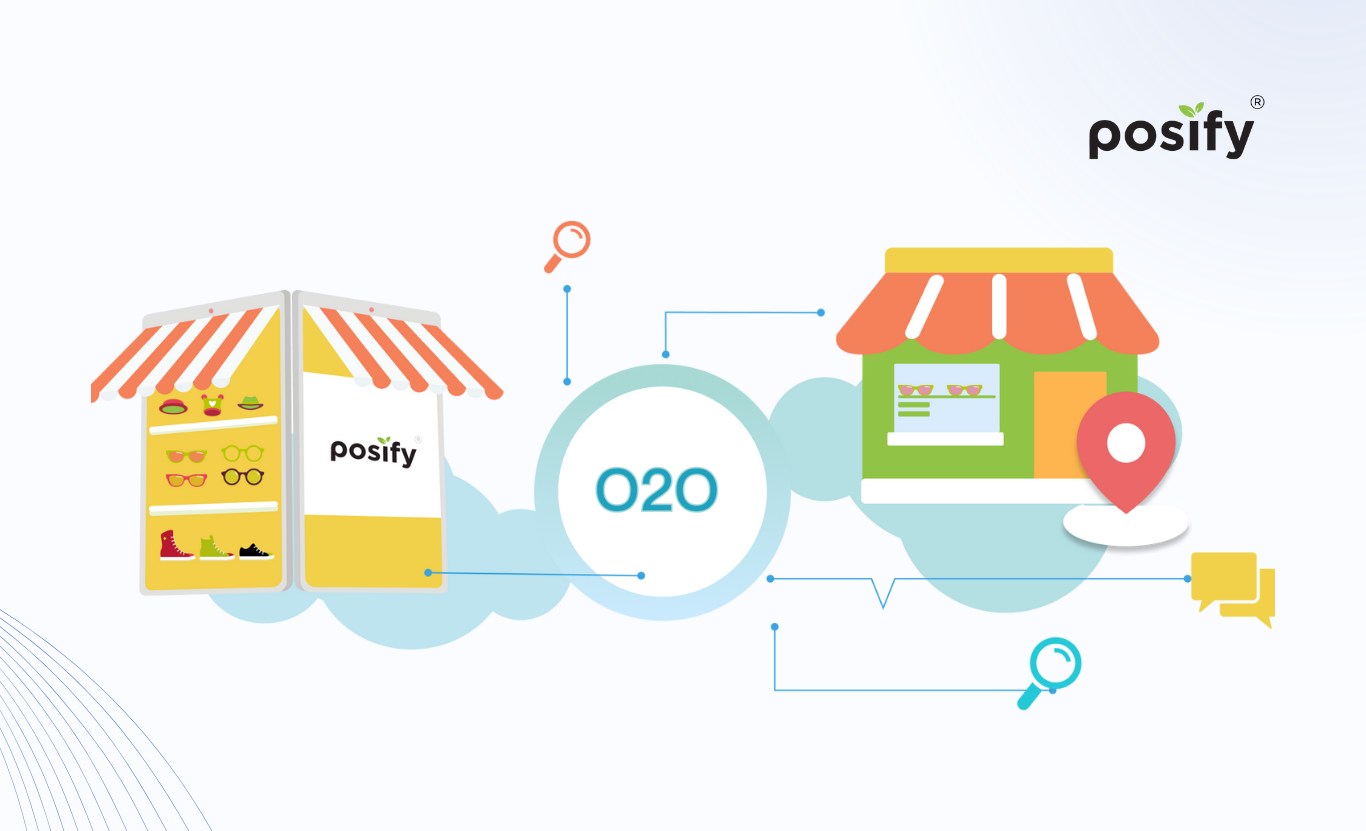
Why Online-Offline Integration is Essential?
Amid digital transformation and shifting consumer behavior, Hong Kong’s retail industry faces both challenges and opportunities. O2O isn’t just a marketing tactic—it’s the core of retail evolution. Here’s why:
1. Digital-First Consumer Behavior
Hong Kong is one of the world’s most digitally connected cities, where consumers follow a "search first, buy later" approach. According to Digital 2025: Hong Kong, the city has 7.4 million residents but 17.4 million mobile internet users—an average of over two connected devices per person. Notably, 48.4% of internet users aged 16+ shop online weekly, proving Hong Kong’s maturity as a smart commerce hub.
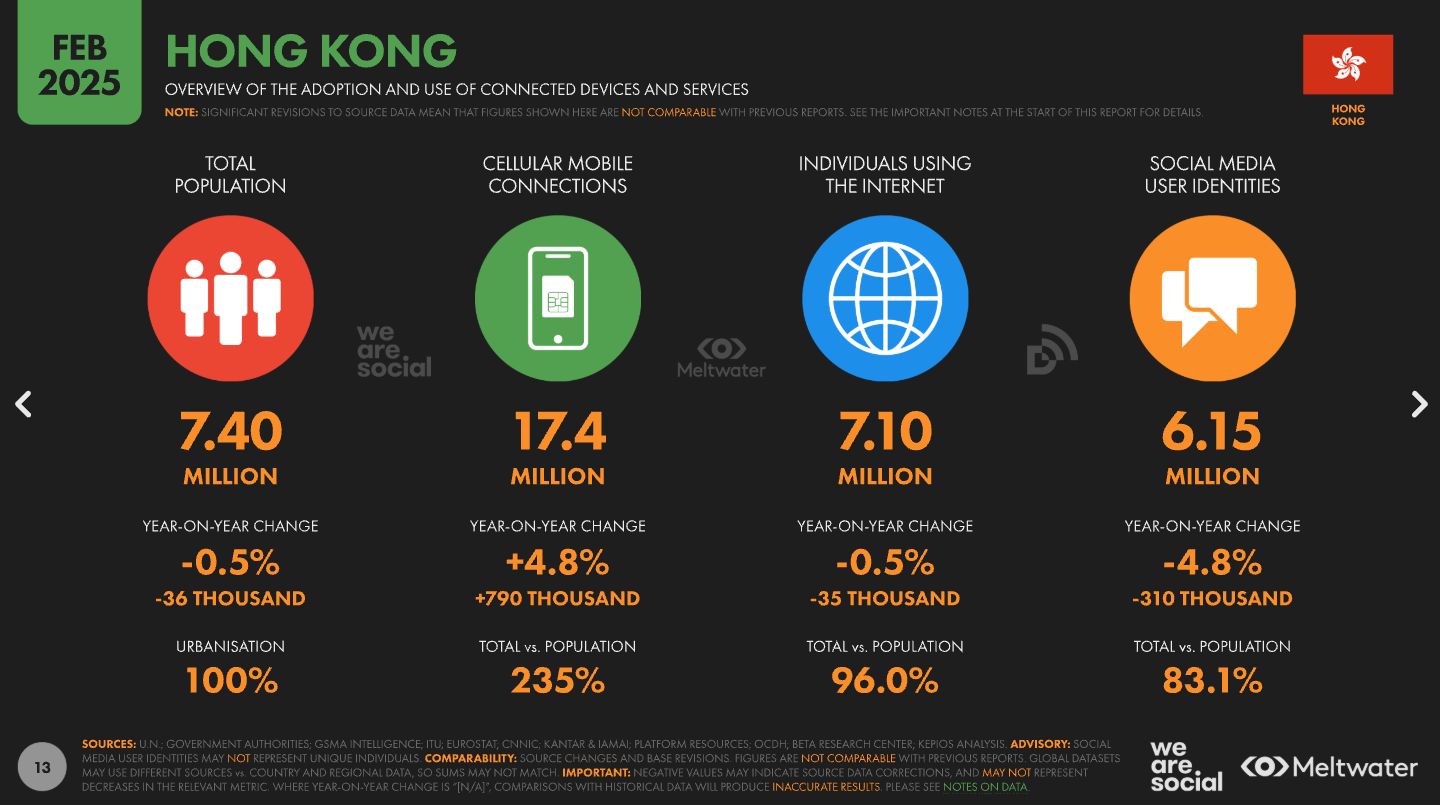
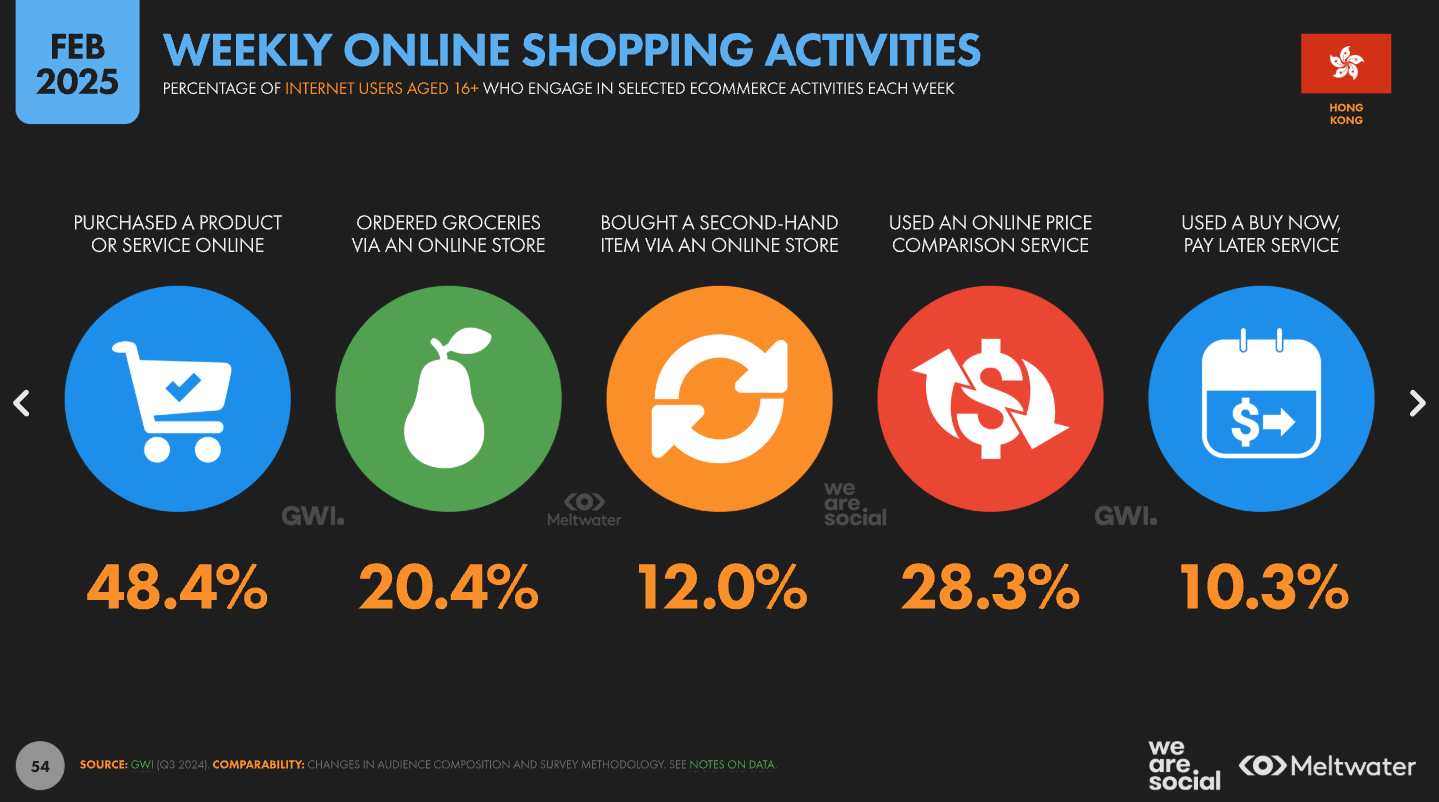
*source: Digital 2025: Hong Kong
2. Competition from E-Commerce & Global Brands
Local retailers face two major threats:
- E-commerce giants (Amazon, Taobao, HKTVmall) eating into market share.
- International brands entering Hong Kong via online campaigns and pop-up stores (O2O testing).
3. Boosting Customer Loyalty & Repeat Sales
With endless choices, Hong Kong shoppers have low brand loyalty. O2O helps retailers personalize experiences by:
Encouraging QR code sign-ups with welcome discounts.
Tracking online browsing + offline purchases to recommend related products (e.g., suggesting lenses to camera buyers).
4. Hong Kong’s Unique Challenges: High Rent & Localization Needs
O2O helps retailers overcome space limitations:
- Reduce reliance on prime locations: Drive traffic to lower-rent stores via online ads.
- Hyper-local marketing: Tailor promotions by district (e.g., Causeway Bay vs. Tuen Mun).
- Pop-ups + appointments: Combine short-term leases with online bookings to cut costs.
5 Key Benefits of O2O for Hong Kong Retailers
In Hong Kong’s highly competitive retail landscape, attracting customers, boosting conversion rates, and driving repeat purchases are top priorities. The O2O (Online-to-Offline) model offers an efficient, flexible, and sustainable strategy, helping retailers strike the perfect balance between online traffic and offline experiences.
Here are five major advantages O2O brings to Hong Kong retailers:
1. Increase Brand Visibility
By leveraging online channels—such as e-stores, social media, Google Search, and ads—retailers can significantly expand their reach to potential customers. Unlike traditional walk-in traffic, O2O allows brands to proactively engage a broader audience and drive them to physical stores for immersive shopping experiences.
2. Strengthen Customer Relationships
Online interactions—product reviews, contact forms, chatbots—combined with in-store services help build trust and loyalty. When customers can research products, check inventory, or book appointments online before visiting a store, the shopping journey becomes seamless, increasing brand stickiness.
3. Enable Omnichannel Retailing
O2O seamlessly integrates e-stores, POS systems, loyalty programs, inventory, and logistics. This unified approach ensures real-time stock updates, consistent pricing, and accurate promotions—eliminating operational errors like mismatched discounts or duplicate orders.
4. Data-Driven Decision Making
An integrated O2O system tracks customer behavior, traffic sources, bestsellers, and regional preferences. Retailers can optimize product assortments, launch targeted promotions, and adjust inventory distribution—making every decision smarter and more strategic.
5. Reduce Operational Risks
O2O diversifies revenue streams across online and offline channels. Even during disruptions (rent hikes, relocations, or unexpected crises), e-stores keep revenue flowing. Retailers can also adapt strategies dynamically based on market demand.
The O2O model isn’t just a tech upgrade—it’s a customer-centric, agile business philosophy. For Hong Kong retailers looking to transform and stay competitive, adopting O2O is no longer optional—it’s essential for long-term growth.
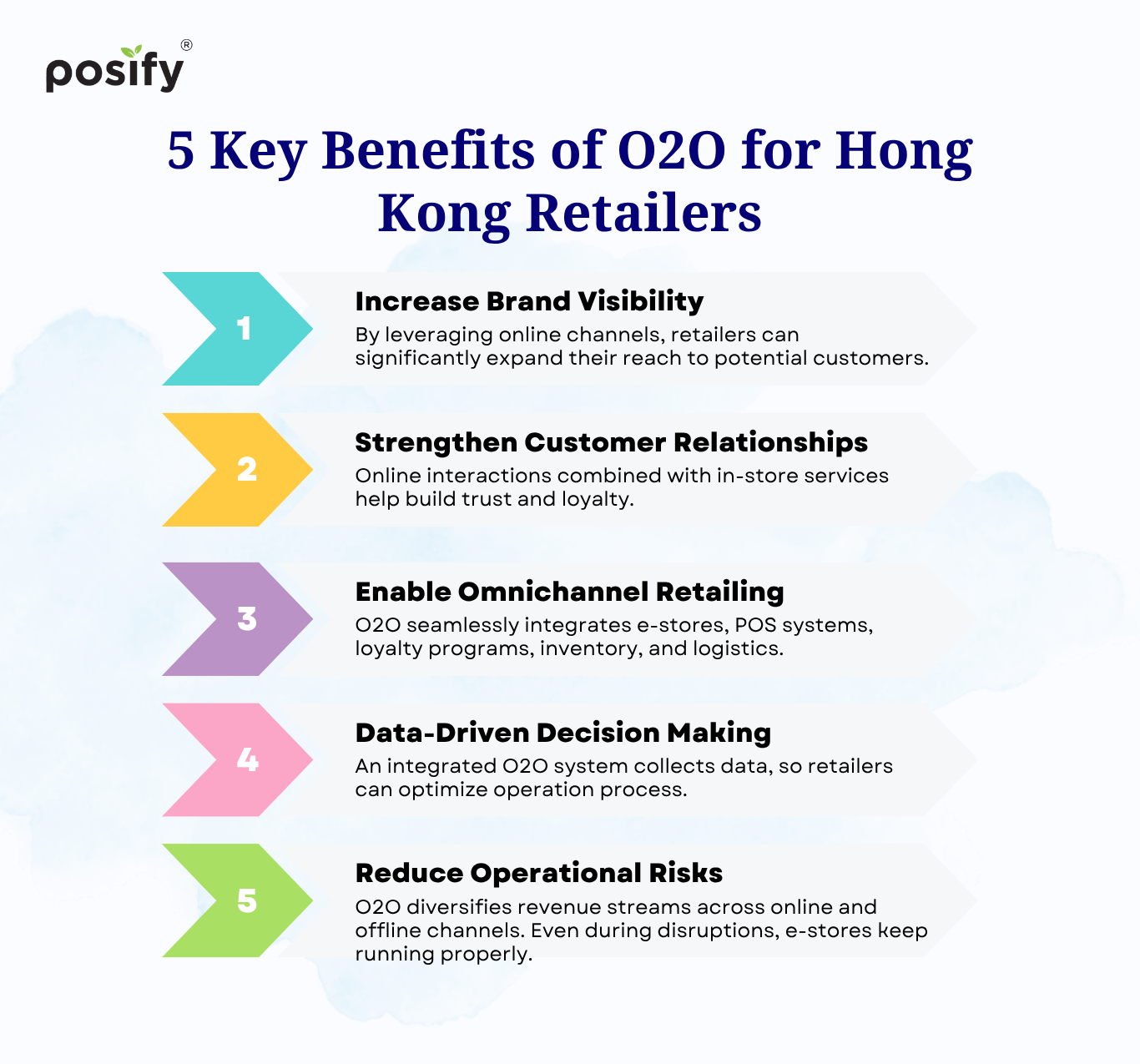
The 3 Pillars of O2O: Digitizing People, Products & Places
O2O isn’t just about channel integration—it’s about the digital management of retail’s three core elements: people, products, and places. These form the pillars of O2O operations, and neglecting any one of them leads to fragmented data, operational gaps, and customer churn. Many Hong Kong retailers struggle with O2O implementation because these fundamentals aren’t properly established. Below, we break down each element to help you build a robust O2O framework.
1. People (Customers): Membership Data is Your Long-Term Asset
In O2O, customers aren’t just one-time buyers—they’re long-term data assets. Tracking each customer’s purchase history and preferences is key to effective remarketing and promotions.
Actionable Tips:
- Implement a unified membership system (e.g., sync in-store and online loyalty points).
- Automatically log purchases (items, time, location, payment method).
- Tag and segment members (e.g., frequent buyers, VIP tiers, product preferences).
- Send personalized messages/coupons for birthdays, holidays, or re-engagement.
2. Products (Inventory): Unified Cross-Channel Stock is Critical
“Is this available in-store?” “Why’s the online price different?” These questions signal inconsistent brand experiences. True O2O requires real-time sync of product details and inventory across all touchpoints.
Actionable Tips:
- Assign standardized SKUs and categorization for all products.
- Use cloud POS systems for real-time stock updates (online + offline).
- Set auto-restocking rules to minimize out-of-stock risks.
- Offer flexible options like click-and-collect or in-store returns for online orders.
3. Places (Channels): Move Beyond "Online vs. Offline" Silos
In O2O, every sales channel works together to deliver a seamless customer journey. Your goal? A unified sales ecosystem, not isolated platforms.
Actionable Tips:
- Integrate e-commerce, stores, social media, and live chat into a single customer hub.
- Track customer interactions across all touchpoints in one system.
- Enable any-channel actions (browse, buy, return, inquire—anywhere).
- Leverage stores as experience hubs (e.g., live events, demos) to drive online engagement.
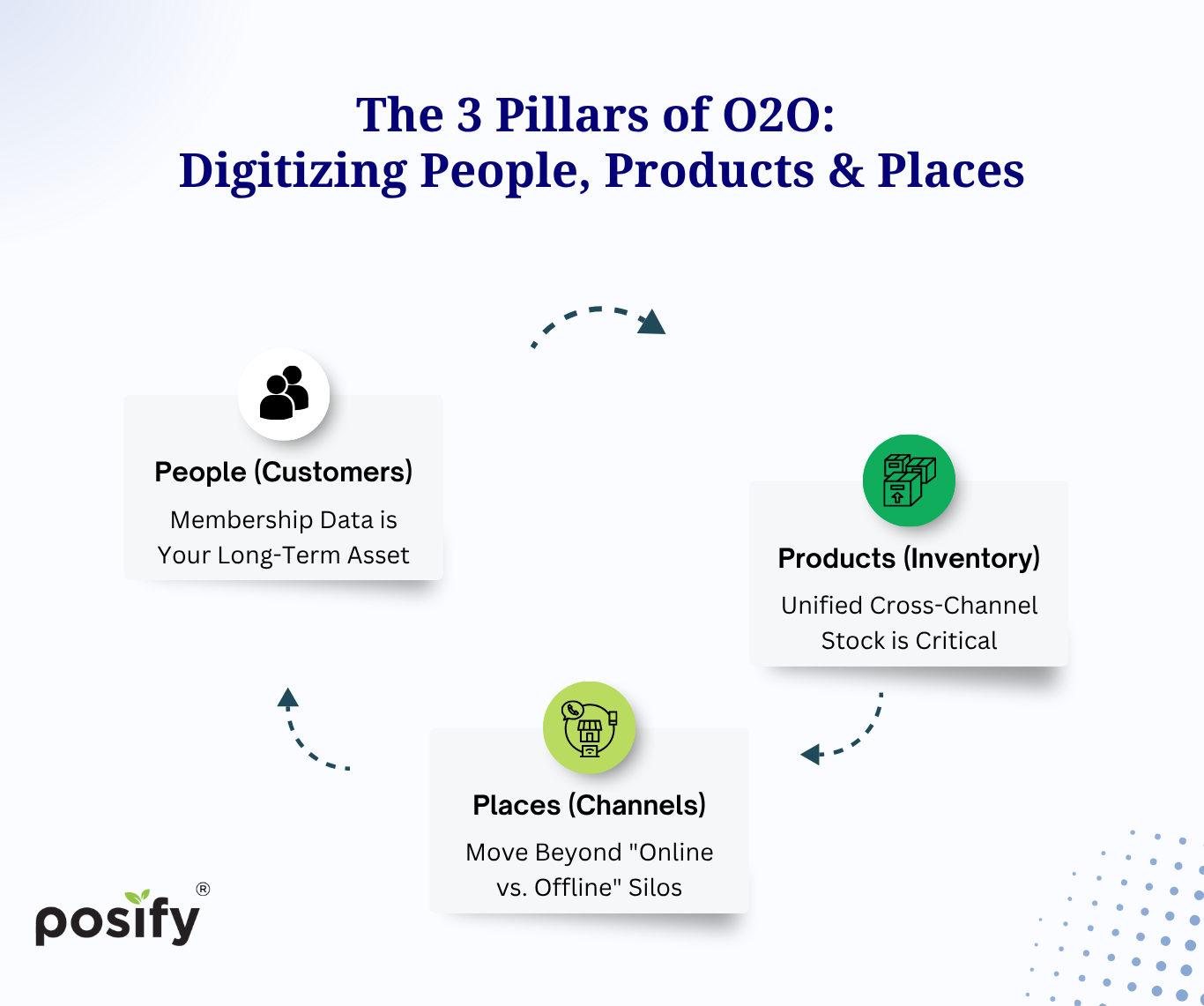
6 Key Factors When Choosing the Right O2O Platform
The success of an O2O strategy hinges on whether the platform truly supports your business needs and growth plans. With so many O2O platforms on the market—ranging from international brands to local solutions, each with different features and pricing models—it’s essential for Hong Kong retailers to find one that strikes the right balance between stability, flexibility, and local support.
Here are six key considerations when choosing an O2O platform:
1. System Integration Capabilities
At its core, O2O is about integration. The platform should seamlessly connect your in-store POS, online store, loyalty system, inventory management, and order fulfilment.
2. User-Friendly Interface and Local Language Support
Most Hong Kong retailers are SMEs with limited in-house IT resources. A straightforward, easy-to-learn interface and full support for Traditional Chinese are crucial for quick adoption and smooth team onboarding.
3. Cross-Channel Membership and Marketing Tools
O2O goes beyond sales integration—it’s also about customer engagement and remarketing. The platform should allow you to collect customer data, create promotional campaigns, and track member activity across channels.
4. Real-Time, Accurate Inventory Management
To prevent overselling or stockouts, the platform must sync online and offline inventory in real time. It should also support multi-warehouse management, stock transfers, and alert notifications, helping you stay agile and keep inventory costs in check.
5. Pricing Structure and Scalability
Whether it’s a subscription model, commission-based, or feature-based pricing, choose what aligns with your current scale and future plans. Also consider how easily the platform can scale—whether adding new stores or expanding into overseas markets.
6. Flexible Reporting and Data Analysis
Access to real-time, detailed analytics on sales, inventory, and customer behaviour is essential for fine-tuning your marketing and stock strategies. Look for platforms that offer customisable reports and integration with third-party analytics tools.
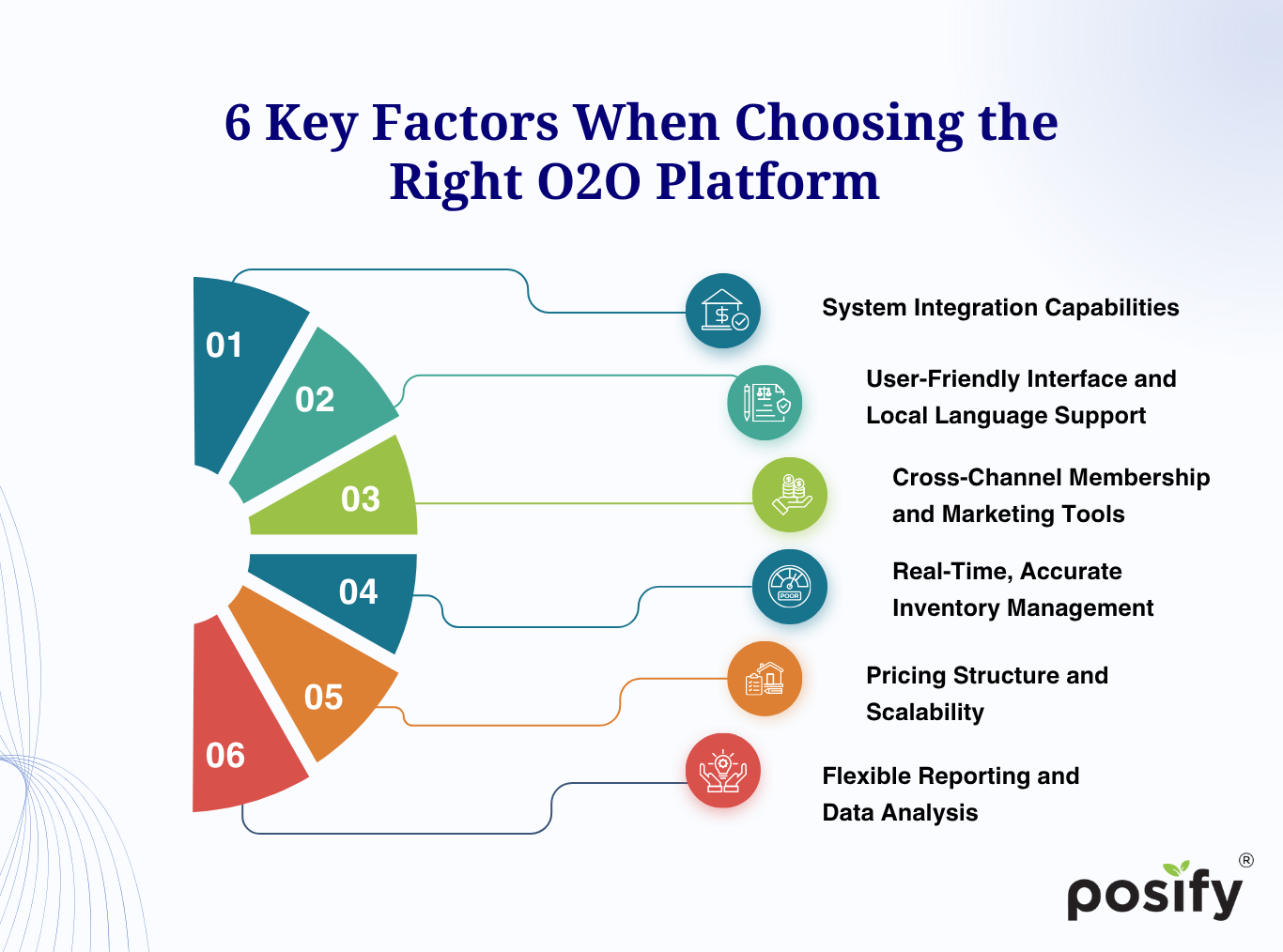
Choose Posify as Your O2O Reliable Partner
For retail business owners in Hong Kong, O2O (online-to-offline) is no longer optional—it’s essential. By connecting your online store with your in-store POS system, leveraging digital tools, and continually refining the customer experience, your brand can stand out in a highly competitive market.
A successful O2O transition requires more than just a solid strategy—it takes an experienced, tech-savvy partner to support you every step of the way. With proven innovation and technical excellence, Posify was recognized with the Silver Award for Best Business Solution (E-commerce) and the Best SME Award in 2017, underscoring our ongoing role in driving digital transformation and business growth.
Whether you're looking to upgrade your in-store POS or launch an online sales channel, Posify offers stable, flexible, and scalable system solutions. Get in touch with our O2O specialists today to explore how we can craft a tailored, all-in-one solution for your brand—so you can stay ahead in a rapidly evolving market.





